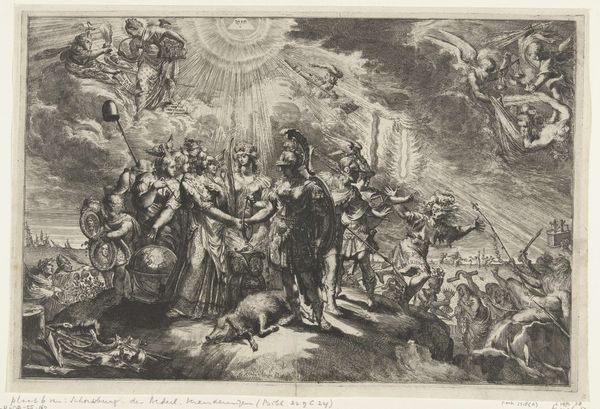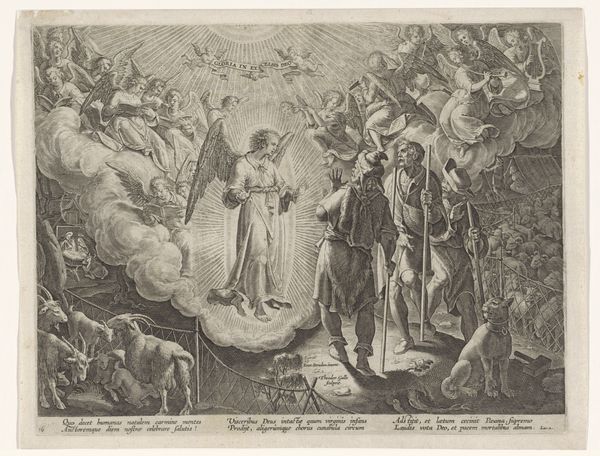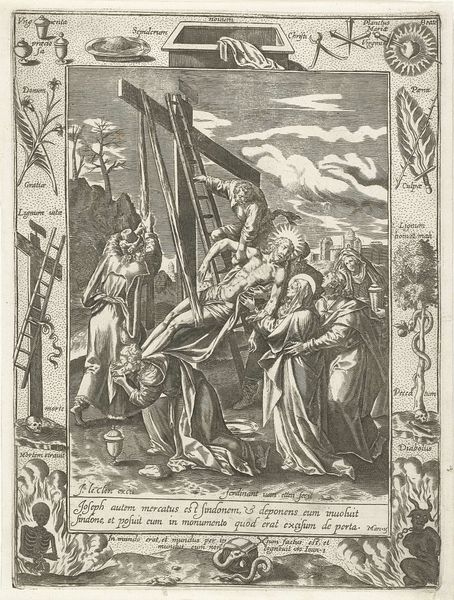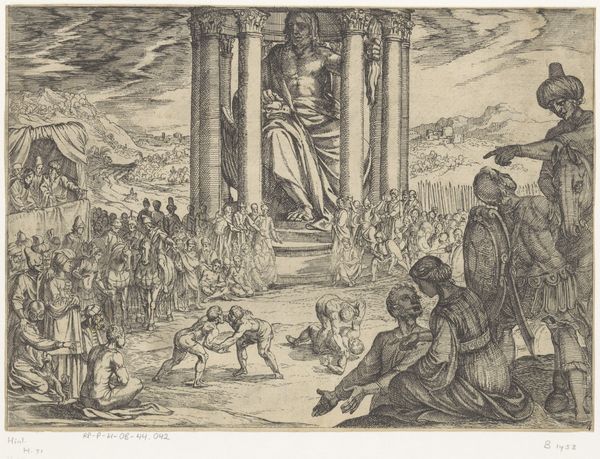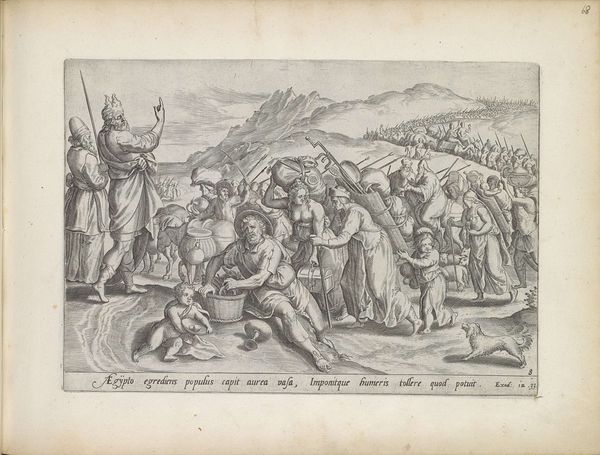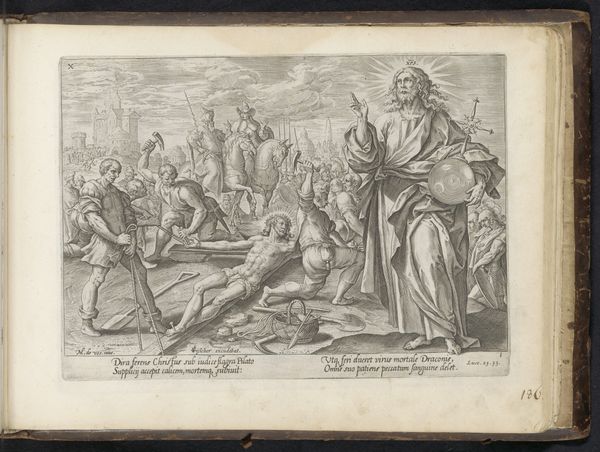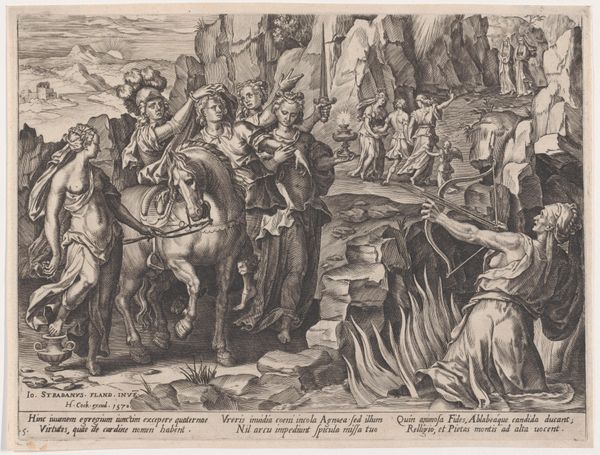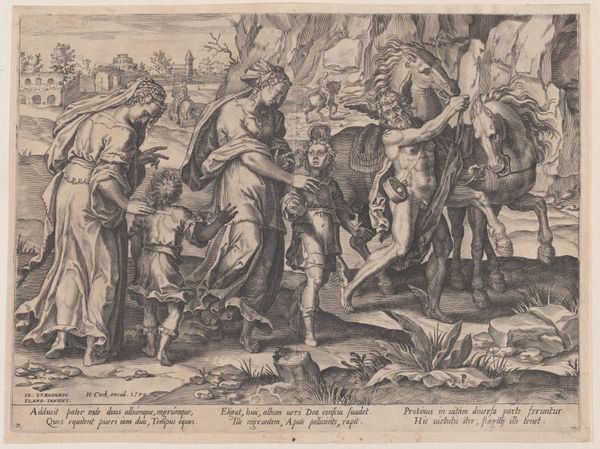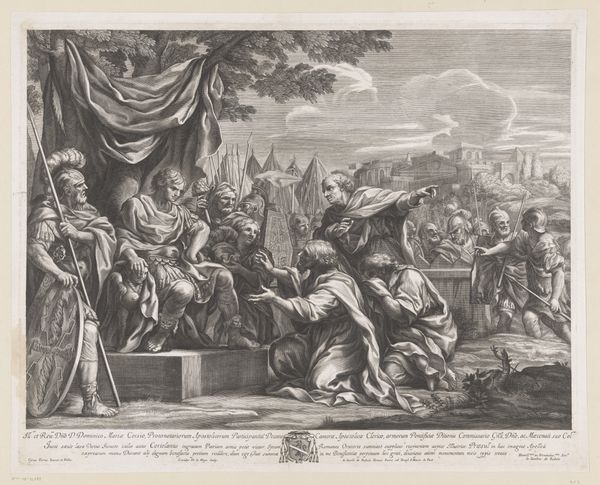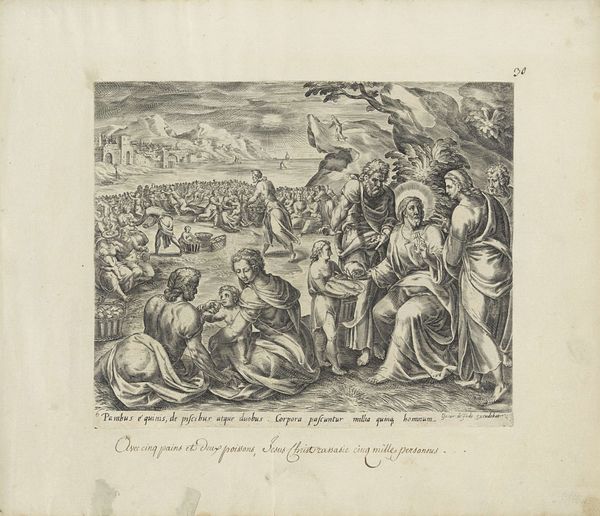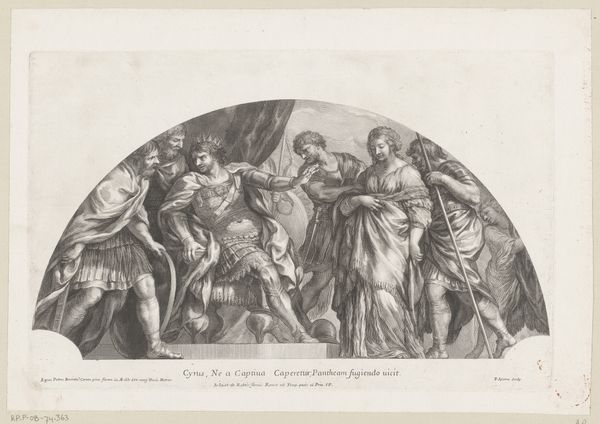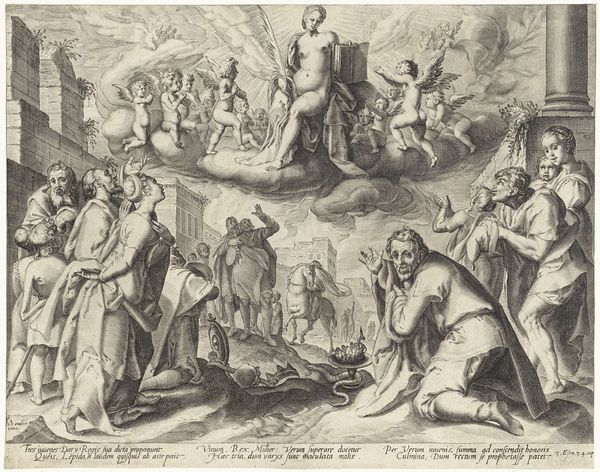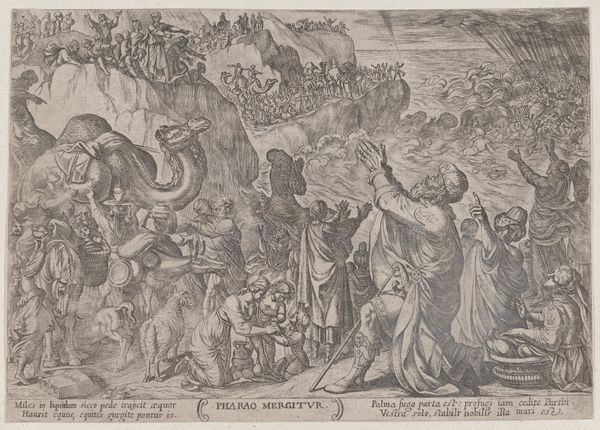
drawing, print, engraving
#
drawing
#
allegory
#
baroque
# print
#
figuration
#
chiaroscuro
#
history-painting
#
engraving
Dimensions: Sheet: 13 1/2 × 17 3/8 in. (34.3 × 44.2 cm)
Copyright: Public Domain
Curator: So, we’re looking at “Allegory of the Immaculate Conception,” a print attributed to Grégoire Huret, dating somewhere between 1620 and 1670. It’s quite the visual statement, isn’t it? An engraving, rich in detail... almost overwhelming, really. Editor: It is! My first impression is that it’s busy—almost unsettlingly so. The dark lines and crowded composition give it a rather weighty, somber feeling. There's almost a palpable tension, despite the subject matter. Curator: You’ve picked up on the chiaroscuro beautifully; the artist really uses that contrast of light and dark to create drama, guiding the eye and imbuing the Virgin Mary figure with an ethereal quality. See how all other forms seem almost grounded to the earthy realm, as opposed to Her? Editor: Exactly! And it is fascinating how he has structured all figures to surround her central position in the visual field; that rigid and triangular formation invites the viewers' eyes to converge at her center. The technique makes her even more iconic. But what's fascinating is the dynamism added to this piece via those subtle diagonals that stretch across its width from left to right. Curator: Indeed! And that positioning aligns beautifully with the themes: it isn't just visual theatrics—allegorically, you have good versus evil, faith versus doubt. There are iconographic details strewn everywhere: the crushed serpent, the cross, the adoring cherubs and even suffering sinners. They are common symbols associated to The Virgin! But, I find the human suffering particularly potent because it connects us, viscerally, to the very human struggle between righteousness and fallibility. Editor: It is quite common to read baroque engravings as somewhat self-indulgent! In this example though, it works! It enhances our sensorial reading, as if touching a sculpture made with contrasting and dramatic reliefs, doesn't it? All this invites a more intense spiritual experience for the observer. Curator: Absolutely. When I stand before this engraving, I’m reminded how we’re so enmeshed in a struggle, both individually and collectively, and even then we’re worthy of a soft gaze that gives a small breath for humanity. It serves as a powerful testament to the enduring appeal and potency of both faith and art. Editor: And on the formalist side, it serves as a perfect reminder about the importance of considering all of art-historical resources to better perceive even subtle human conditions represented in any artwork, no matter how 'overwhelmingly busy' its visual presentation may seem.
Comments
No comments
Be the first to comment and join the conversation on the ultimate creative platform.
